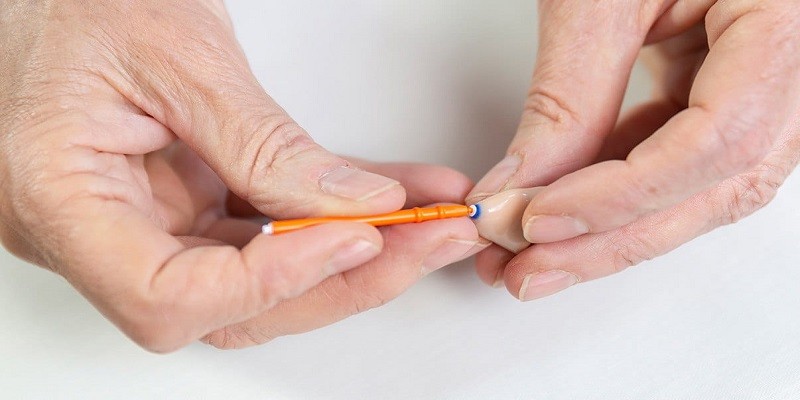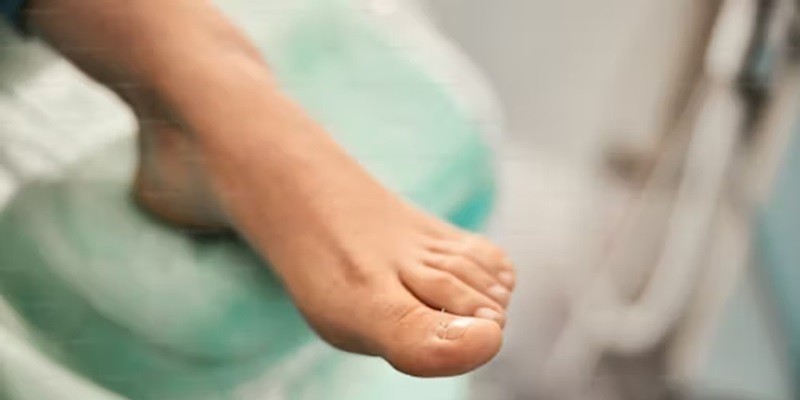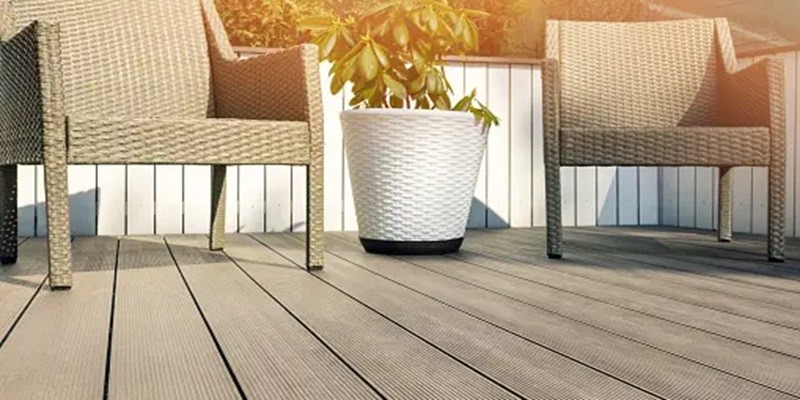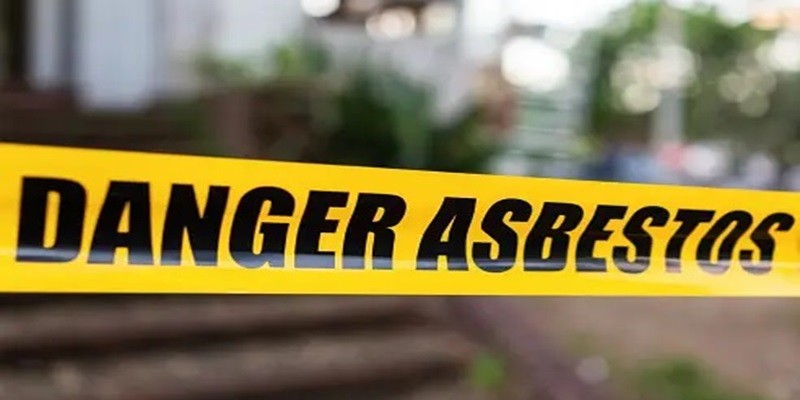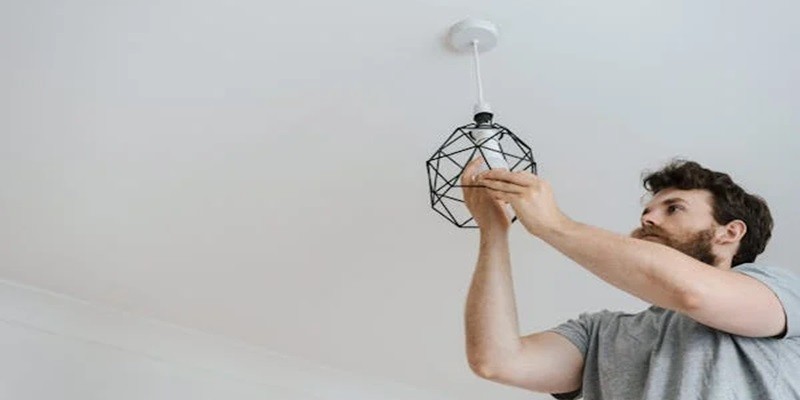To clean your hearing aids, use a clean, dry cloth to wipe away any moisture or earwax from the device. Then, use a soft-bristled brush to clean any hard-to-reach areas.
Hearing aids are a vital tool for individuals with hearing loss, allowing them to stay connected to the world around them. However, regular maintenance and cleaning are essential to ensure that the device performs correctly and lasts for an extended period.
Over time, earwax, sweat, and other debris can build upon the hearing aid’s surface, leading to poor sound quality and potential damage to the device. Fortunately, cleaning your hearing aids is a relatively easy and straightforward process that you can perform at home. In this article, we’ll provide you with tips and tricks for safely cleaning your hearing aids, helping you keep them in top condition for long-term use.
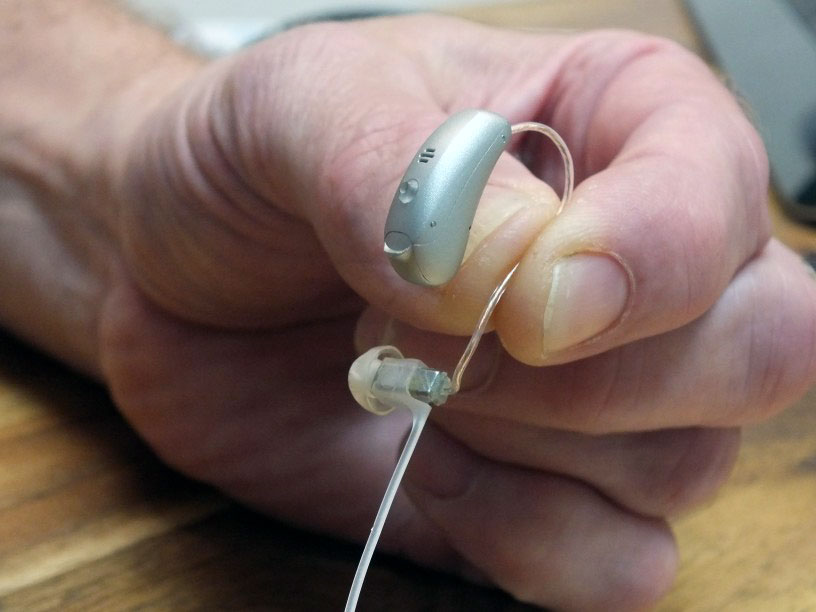
Credit: www.neilsperlingmd.com
Understanding The Importance Of Proper Hearing Aid Cleaning
Caring for a hearing aid helps maintain its quality and prolong its lifespan. Your hearing aid plays a key role in helping you communicate effectively and ensuring your safety. Therefore, proper maintenance and cleaning are essential. Here’s why:
The Risks Of Neglecting Your Hearing Aid
Neglecting to clean your hearing aid can impact its functionality and cause more harm than good. Some of the most significant risks associated with neglecting hearing aid care include:
- Infection: Earwax buildup and moisture can create a breeding ground for bacteria, leading to ear infections.
- Reduced lifespan: Neglecting your hearing aid cleaning can shorten its lifespan and require you to replace it sooner.
- Poor clarity: Built-up earwax, debris, and moisture can affect hearing quality and cause muffled sound output from the hearing aid.
Why Cleaning Your Hearing Aid Is Important?
Proper cleaning of hearing aids is essential to maintain ear hygiene and prevent infections. The following points highlight the importance of cleaning your hearing aids regularly:
- Longevity: Proper maintenance helps keep your hearing aids functioning correctly and prolongs their lifespan.
- Hygienic: Regular cleaning of hearing aids prevents the accumulation of earwax and bacteria that can cause infections.
- Improved sound quality: Built-up earwax and debris can affect the sound quality of your hearing aids. Regular cleaning ensures clear and muffled-free sound quality.
The Benefits Of Regular Hearing Aid Maintenance
Regular hearing aid maintenance is necessary for overall ear hygiene and promoting optimal listening experiences. Below are some of the benefits of regular hearing aid maintenance:
- Proper functionality: Regular cleaning ensures your hearing aids are functioning correctly and producing optimal sound.
- Prevention of ear infections: Cleaning the hearing aid regularly keeps your ears free from bacteria and reduces the risk of infection.
- Cost-effective: Regular cleaning and maintenance help increase the longevity of your hearing aids, reducing the likelihood of replacing them frequently.
Cleaning and maintaining your hearing aids is crucial for their longevity and overall ear hygiene. Proper cleaning helps prevent infections and enhances the quality of sound produced by the hearing aids. Neglecting to clean your hearing aids can impact their functionality and durability, making regular maintenance the best preventive measure.
How To Clean Your Hearing Aids Effectively
Hearing aids are crucial medical devices that require proper maintenance. Cleaning your hearing aids is an essential step in ensuring that they last as long as possible and perform optimally. We will explore the best way to clean your hearing aids and provide useful tips to help you achieve the best cleaning results.
Tools You Need To Get Started
Cleaning your hearing aids should be a regular part of your daily routine. Before you begin, you will need the following tools:
- Soft-bristled brush
- Wax pick or wire loop
- Hard surface cleaner
- Soft, dry cloth
- Cleaning wipes
- Dehumidifier
How To Safely And Thoroughly Clean Your Hearing Aid
When cleaning your hearing aids, it is important to be gentle to avoid damaging them. Here’s how you can safely and thoroughly clean your hearing aid:
- Turn off your hearing aid before cleaning it.
- Remove the earwax and debris from the device by using a soft-bristled brush. Use gentle strokes to brush away any wax or debris from the surface.
- Use a wax pick or wire loop to remove any stubborn earwax that the brush cannot remove. Be careful not to poke the device’s microphone or receiver while doing so.
- Wipe your hearing aid gently with a dry cloth to remove any remaining debris or wax.
- Check the receiver tubing for blockages. If it is blocked, use a forced air blower or a wax pick to remove the blockage. Avoid using water, as it can damage the device.
- Disinfect your hearing aid using a hard surface cleaner or cleaning wipes.
- Store your hearing aid in a dehumidifier overnight to remove any remaining moisture.
Tips For Best Cleaning Results
Cleaning your hearing aids can be challenging, but with these tips, you can achieve the best cleaning results:
- Clean your hearing aids daily to prevent the accumulation of wax and debris.
- Store your hearing aids in an overnight dehumidifier to remove any moisture buildup.
- Remove your hearing aids before engaging in any water activities to avoid water damage.
- Avoid using household cleaning products or alcohol on your hearing aids to prevent damage.
- Always keep your hearing aids in a safe and dry place when not in use.
How Often Should You Clean Your Hearing Aid?
Cleaning your hearing aid daily is highly recommended, especially if you wear them for extended periods. However, your audiologist may recommend a cleaning schedule depending on the type of device you have and your lifestyle. If you are unsure about how often to clean your hearing aids, consult your audiologist for guidance.
Regular cleaning of your hearing aids is crucial in maintaining their effectiveness and longevity. With the tools and tips mentioned you can safely and effectively clean your hearing aids, ensuring that they remain in top condition.
Cleaning Your Hearing Aids According To The Type
Keeping hearing aids clean is crucial. Not only for hygiene purposes but also to extend their lifespan and to ensure that they work optimally. However, not all hearing aids are created equal, and each type requires a specific cleaning method.
Here’s everything you need to know about cleaning your hearing aids according to the type.
Cleaning Behind-The-Ear (Bte) Hearing Aids
- Remove the earmold and brush to get rid of any wax or debris.
- Clean the earmold with a mild soap and warm water solution.
- Use a cloth to wipe the surface of the hearing aid clean, making sure to avoid the microphone and receiver.
- Use a specialized drying kit or place the hearing aids on a clean, dry surface for at least 30 minutes.
Cleaning In-The-Ear (Ite) Hearing Aids
- Use a wax pick to remove wax or debris from the dome or custom mold.
- Clean the surface of the hearing aid with a soft, dry cloth, making sure not to damage the microphone or receiver.
- Use a mild soap and warm water solution to clean the mold or dome.
- Allow the hearing aid to air dry or use a specialized drying kit for at least 30 minutes.
Cleaning Receiver-In-Canal (Ric) Hearing Aids
- Remove the earmold and brush the receiver tip, making sure to remove any wax or debris.
- Clean the earmold with a mild soap and warm water solution.
- Use a cloth to wipe the surface of the hearing aid clean, making sure to avoid the microphone and receiver.
- Place the receiver tip in the specialized drying kit or on a clean, dry surface to air dry for at least 30 minutes.
Cleaning Completely-In-The-Canal (Cic) Hearing Aids
- Use a wax pick to remove wax or debris from the hearing aid’s opening, making sure not to push it deeper into the device.
- Use a brush to clean the surface of the hearing aid.
- Use a cloth to wipe the hearing aid clean, making sure not to damage the microphone or receiver.
- Use a specialized drying kit or place the hearing aid on a clean, dry surface to air dry for at least 30 minutes.
Cleaning Invisible-In-Canal (Iic) Hearing Aids
- Gently remove the hearing aid, making sure not to damage it.
- Remove any wax or debris from the surface with a brush.
- Use a cloth to wipe the hearing aid clean, making sure not to damage the microphone or receiver.
- Place the device in a specialized drying kit or on a clean, dry surface to air dry for at least 30 minutes.
Remember, it’s essential to clean your hearing aids regularly to keep them functioning correctly. Ensure you follow the correct cleaning method for your hearing aid type, and if in doubt, consult your audiologist.
Common Hearing Aid Cleaning Mistakes And How To Avoid Them
Hearing aids are an essential device for people with hearing loss. To ensure that they function correctly and to increase their longevity, maintaining them is crucial. However, there are some common hearing aid cleaning mistakes that many people make, making their hearing aids wear out faster or malfunction.
In this blog post, we will highlight some of these mistakes and how to avoid them.
Using The Wrong Cleaning Products
Using the wrong cleaning products can damage your hearing aid, and this is one of the most common mistakes. Here are some tips to help you avoid making this mistake:
- Use only products that are recommended by your hearing aid provider or manufacturer.
- Avoid using water, alcohol, or any cleaning solution containing solvents because they can cause damage to your hearing aid.
- If you are in doubt about a cleaning product, contact your provider for advice.
Not Drying Your Hearing Aid Properly
Another common mistake is failing to dry your hearing aid thoroughly. Moisture can corrode the internal components, leading to hearing aid malfunction. Here are some tips to help you avoid this mistake:
- After cleaning, leave your hearing aid out to dry for at least 30 minutes before using it.
- Use a hearing aid dehumidifier to dry your device overnight.
- Avoid exposing your hearing aid to extreme heat, as it can damage the delicate electronic components.
Not Cleaning Your Hearing Aid Regularly
Not cleaning your hearing aid regularly can cause a buildup of wax, debris, and dirt, leading to malfunctioning devices. Here are some tips to help you avoid this mistake:
- Clean your hearing aid every day, preferably in the evening before going to bed.
- Use a soft, dry cloth to wipe away any debris or dirt on the device.
- Use a wax pick or brush to remove any earwax buildup in the hearing aid’s openings.
Damaging The Hearing Aid Components
Hearing aids are delicate electronic devices that require proper care to ensure their longevity. Here are some tips to help you avoid damaging the hearing aid components:
- Avoid dropping your hearing aid as it can cause internal damage.
- Do not expose your hearing aid to extreme temperatures, moisture, or humidity.
- Use a protective case to store your hearing aid when not in use.
Cleaning your hearing aid correctly is essential for its durability and optimal performance. We hope that the tips provided in this blog post will help you avoid common hearing aid cleaning mistakes and maintain your device for a long time.
Keeping Your Hearing Aids Clean: Best Practices
When you wear hearing aids regularly, they are likely to accumulate dirt, dust, and earwax, affecting their performance. Therefore, proper cleaning and maintenance of hearing aids are crucial to ensure they work well. Below are some best practices to keep your hearing aid clean and functional.
Professional Cleaning And Maintenance
Professional cleaning and maintenance should be part of your hearing aid care routine. Regular cleaning by a hearing healthcare professional ensures that your hearing aids are clean, fitted properly, and working correctly. Schedule an appointment with your audiologist or hearing aid specialist every six months to have your hearing aids professionally cleaned.
Tips For Preventing Damage To Your Hearing Aids
Taking good care of your hearing aids can help prevent damage and extend their lifespan. Here are some tips to prevent damage to your hearing aids:
- Avoid exposing your hearing aids to moisture, such as water or sweat.
- Remove your hearing aids before swimming, showering, or using a hair dryer or other hair styling products.
- Do not wear your hearing aids while applying makeup, lotion, or other cosmetics.
- Keep your hearing aids away from heat sources such as sunlight and radiators.
- Handle your hearing aids with clean and dry hands.
Proper Storage Of Your Hearing Aids
Proper storage of your hearing aids can help keep them working well. Store your hearing aids in a cool, dry, and safe place. Here are some additional tips for storing your hearing aids:
- Use a dry and protective case specifically designed for hearing aids when storing them.
- Keep your hearing aids out of reach of pets and children.
- Remove the batteries from your hearing aids before storing them.
Best Practices For Using Your Hearing Aid To Avoid The Need For Frequent Cleaning
Preventive measures can help reduce the frequency of cleaning your hearing aids. Here are some best practices to avoid the need for frequent cleaning:
- Keep your ears clean and dry.
- Use a soft, clean, and dry cloth or tissue to wipe your hearing aids daily.
- Do not use water, soap, or other cleaning solutions to clean your hearing aids as they can damage them.
- Remove your hearing aids when not in use, such as during sleep to avoid damage and to conserve battery life.
Keeping your hearing aids clean is crucial for their optimal performance and longevity. Following the above best practices can help ensure your hearing aids are clean, functional and last for a long time. Remember to seek professional help whenever you need assistance.
Frequently Asked Questions For How To Clean Your Hearing Aids?
How Often Should Hearing Aids Be Cleaned?
It is recommended to clean hearing aids daily to prevent damage or infection.
What Is The Best Way To Clean Hearing Aids?
Using a dry, soft cloth or special brush, gently wipe the hearing aids and clean earmolds with a damp cloth or alcohol wipe.
Can You Clean Hearing Aids With Water?
It is not recommended to clean hearing aids with water as it can damage the internal components.
How Should You Store Your Hearing Aids?
Store your hearing aids in a cool, dry place and avoid exposing them to extreme temperatures or humidity.
What Should You Do If Your Hearing Aids Are Still Not Working After Cleaning?
If your hearing aids are still not working after cleaning, contact your hearing healthcare professional for further assistance and troubleshooting.
Conclusion
Cleaning your hearing aids is an essential part of maintaining your hearing health. Neglecting to clean them regularly can lead to malfunction and even harm to your ears. With these simple steps, you can easily clean your hearing aids at home.
First, make sure to gather all the necessary cleaning tools. Then, switch off your hearing aids and remove the batteries. Gently wipe off any wax or debris using a dry cloth or brush. For deeper cleaning, use a specialized cleaning solution or disinfectant wipes.
Lastly, avoid exposing your hearing aids to moisture, extreme heat, or cold temperatures. Regular cleaning will not only prolong the lifespan of your hearing aids but also ensure that they work effectively to prevent hearing loss. So make sure to incorporate cleaning your hearing aids into your daily routine.
Happy hearing!

